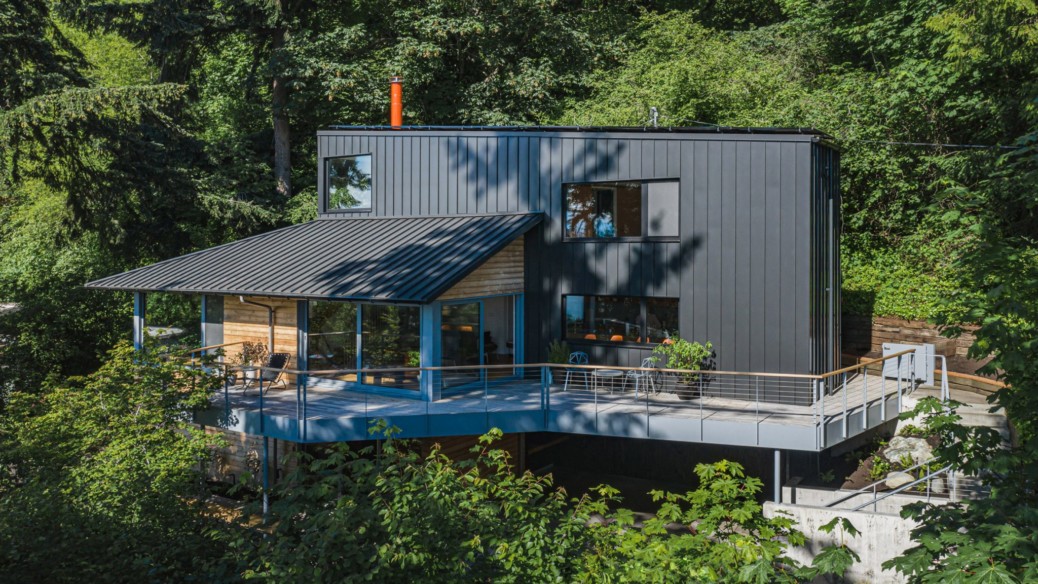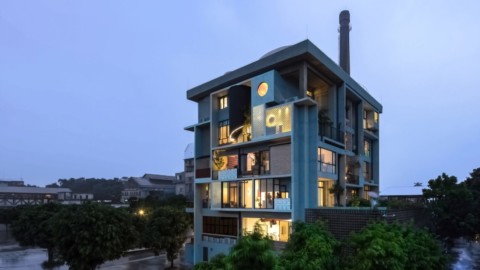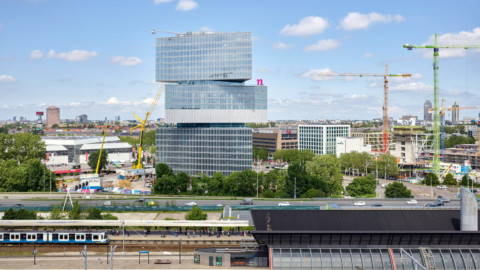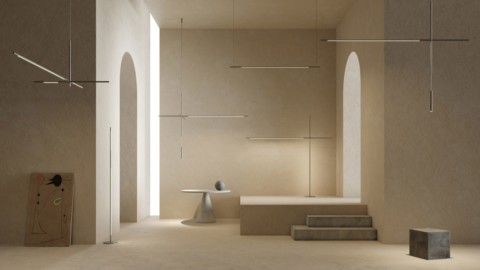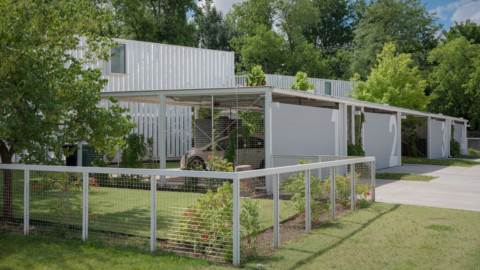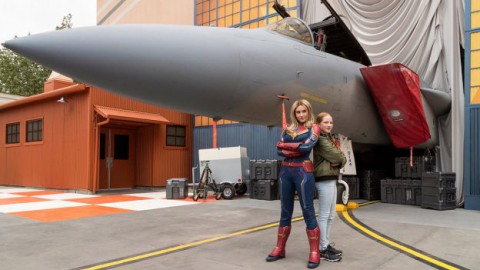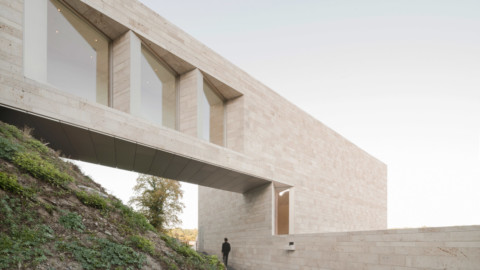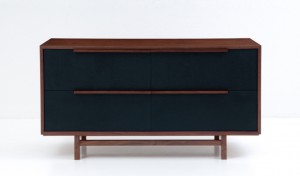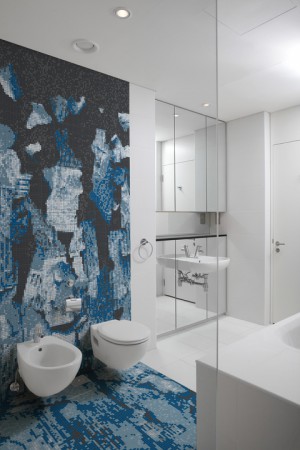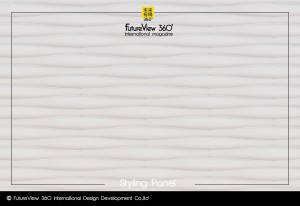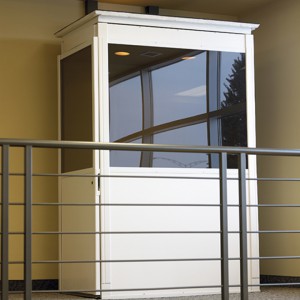American studio SHED referenced Japanese design and three-ring circus tents when creating the Me-Kwa-Mooks Net-Zero house in Seattle, Washington.
Located on a sloped site beside Me-Kwa-Mooks Park, the dwelling is a remodel of an existing house with a jumbled layout and poor energy performance that the studio said followed “several ill-conceived additions and modifications”.
美國工作室SHED在華盛頓西雅圖創建Me-Kwa-Mooks Net-Zero房子時參考了日本設計和三環馬戲團帳篷。
該住所位於Me-Kwa-Mooks公園旁邊的傾斜場地上,是一棟現有房屋的改建,佈局混亂,能源性能差,工作室稱這是“幾處設計不當的附加和修改”。
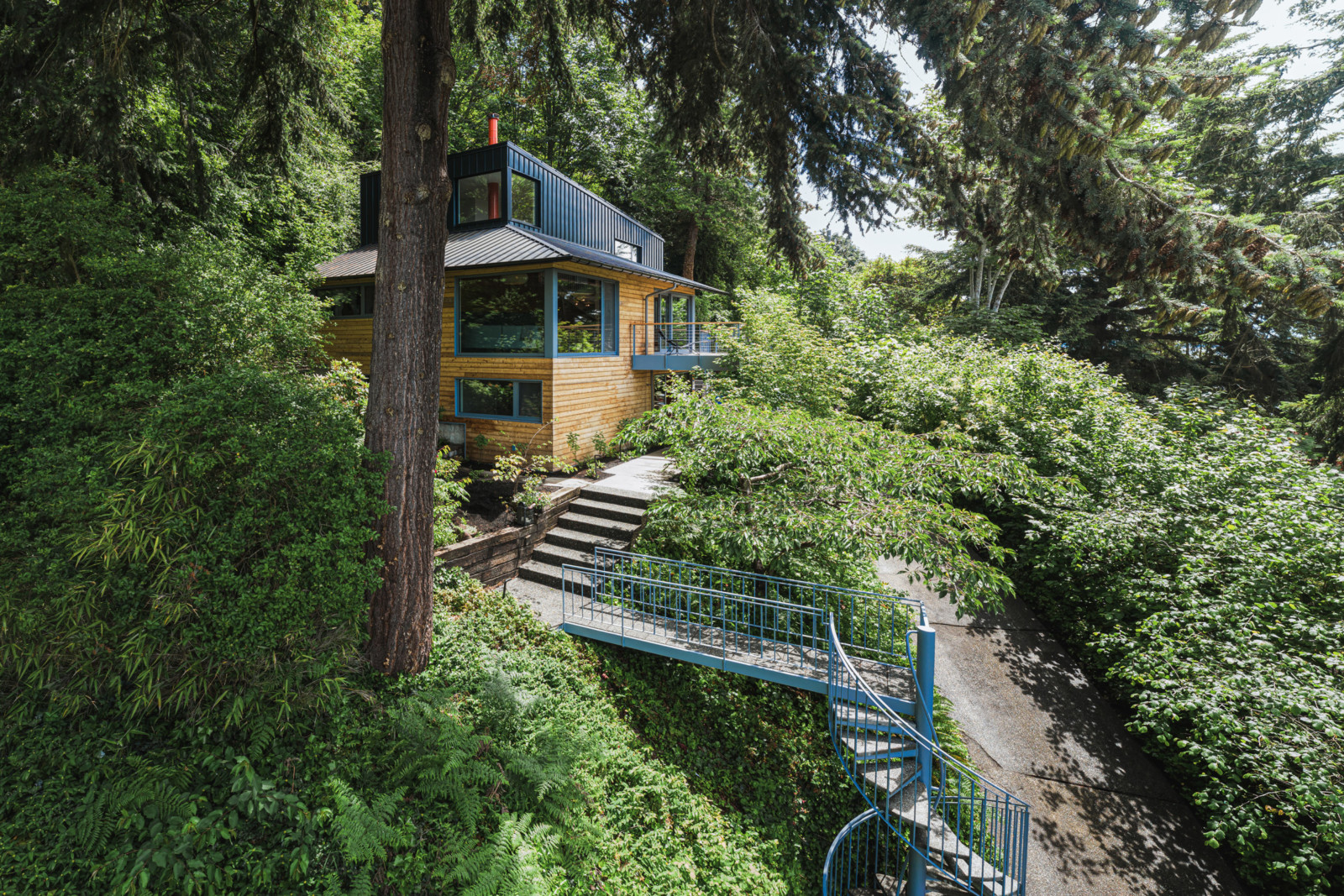
SHED’s overhaul was designed to make the house more sustainable and better reflect the interests of its owners – two former circus performers with a love for Japanese architecture.
To achieve this, it stripped back the dwelling into two interlocking volumes and simplified its interiors to create brighter, open spaces with views outside.
SHED的大修旨在使房屋更具可持續性,並更好地反映業主的利益-兩位前馬戲團表演者熱愛日本建築。
為了實現這一目標,它將住宅分成兩個相互連接的空間,並簡化了內部空間,以創建更明亮,更開放的空間,並享有外部景觀。
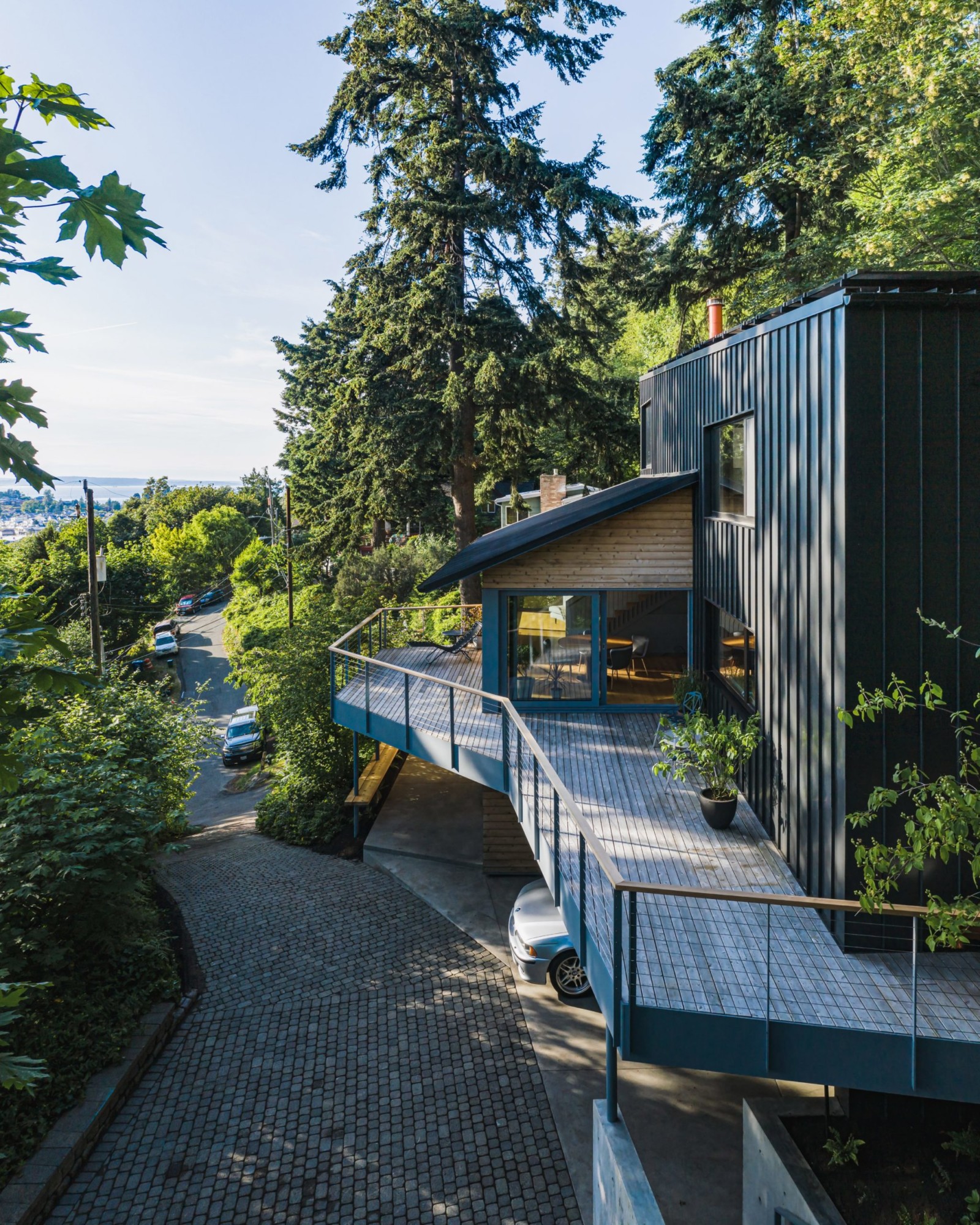
“Both clients have lived in Japan, and enjoy both traditional and contemporary design elements from the concept of the tea room to Studio Ghibli to contemporary Japanese architecture,” said the Seattle-based studio.
“Both clients had been professional circus performers, bearing an affinity for open, dynamic spaces,” it added.
“A key element of the brief was for the small individual spaces to open, and become interconnected spaces with big views to forest and water.”
西雅圖的工作室說:“兩個客戶都住在日本,從茶室的概念到吉卜力工作室到當代日本建築,都享受著傳統和現代的設計元素。”
它補充說:“兩個客戶都是專業的馬戲表演者,對開放,動態的空間有著濃厚的興趣。”
“簡報的一個關鍵要素是開放小型個體空間,使之成為相互連通的空間,並享有森林和水的美景。”
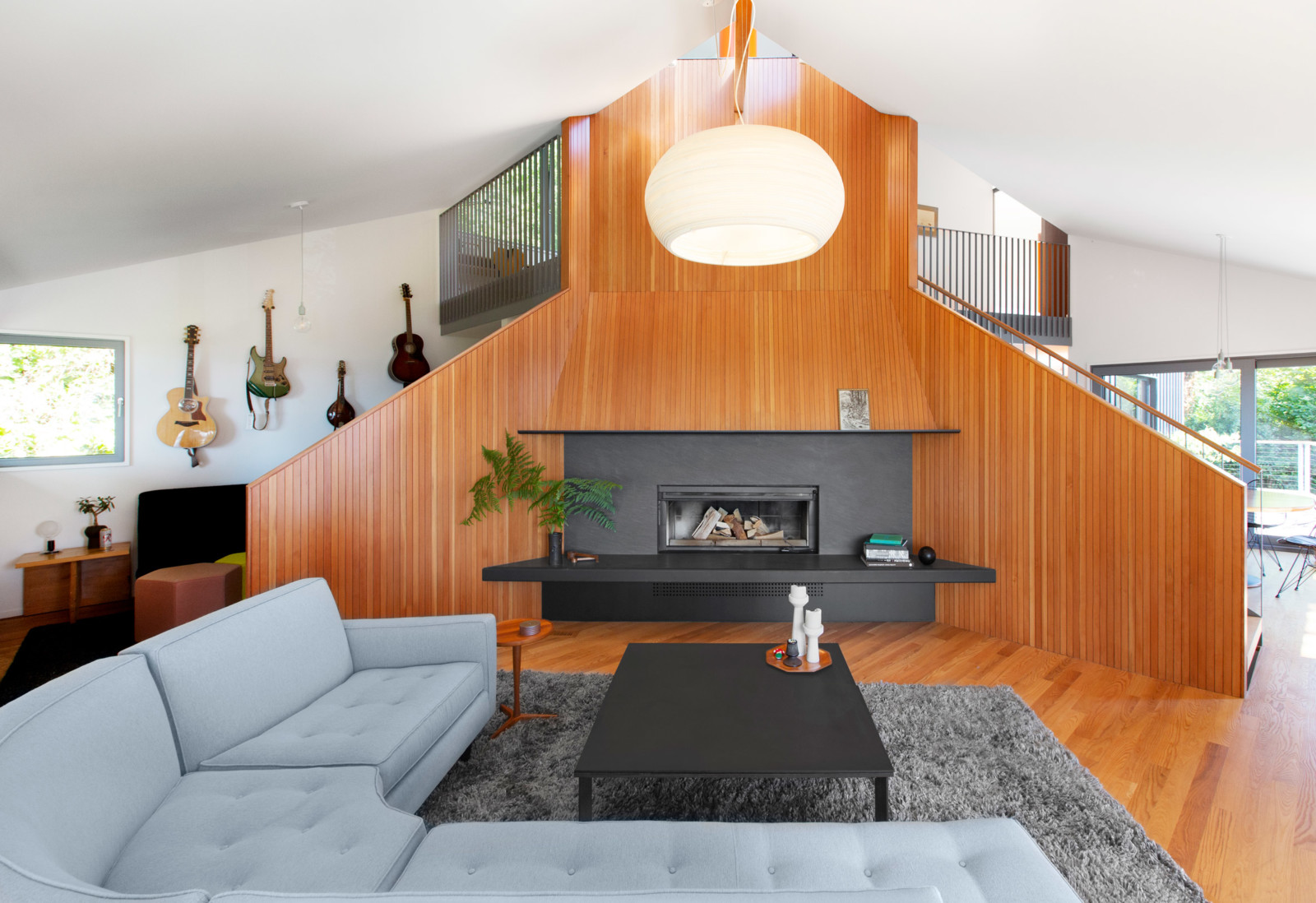
To modernise the Me-Kwa-Mooks Net-Zero house’s stripped-back exterior, SHED clad one of the volumes in wood and the other in standing seam metal panels.
They are unified by a large, wooden veranda, which evokes a Japanese engawa and provides private outdoor space and a viewing platform of the park.
為了使Me-Kwa-Mooks Net-Zero房屋的後翻式外觀現代化,SHED將其中一個用木材包裹,將另一個用立縫金屬板包裹。
它們由一個大型的木製陽台統一起來,該陽台讓人聯想起日本的恩川,並提供私人戶外空間和公園觀景台。
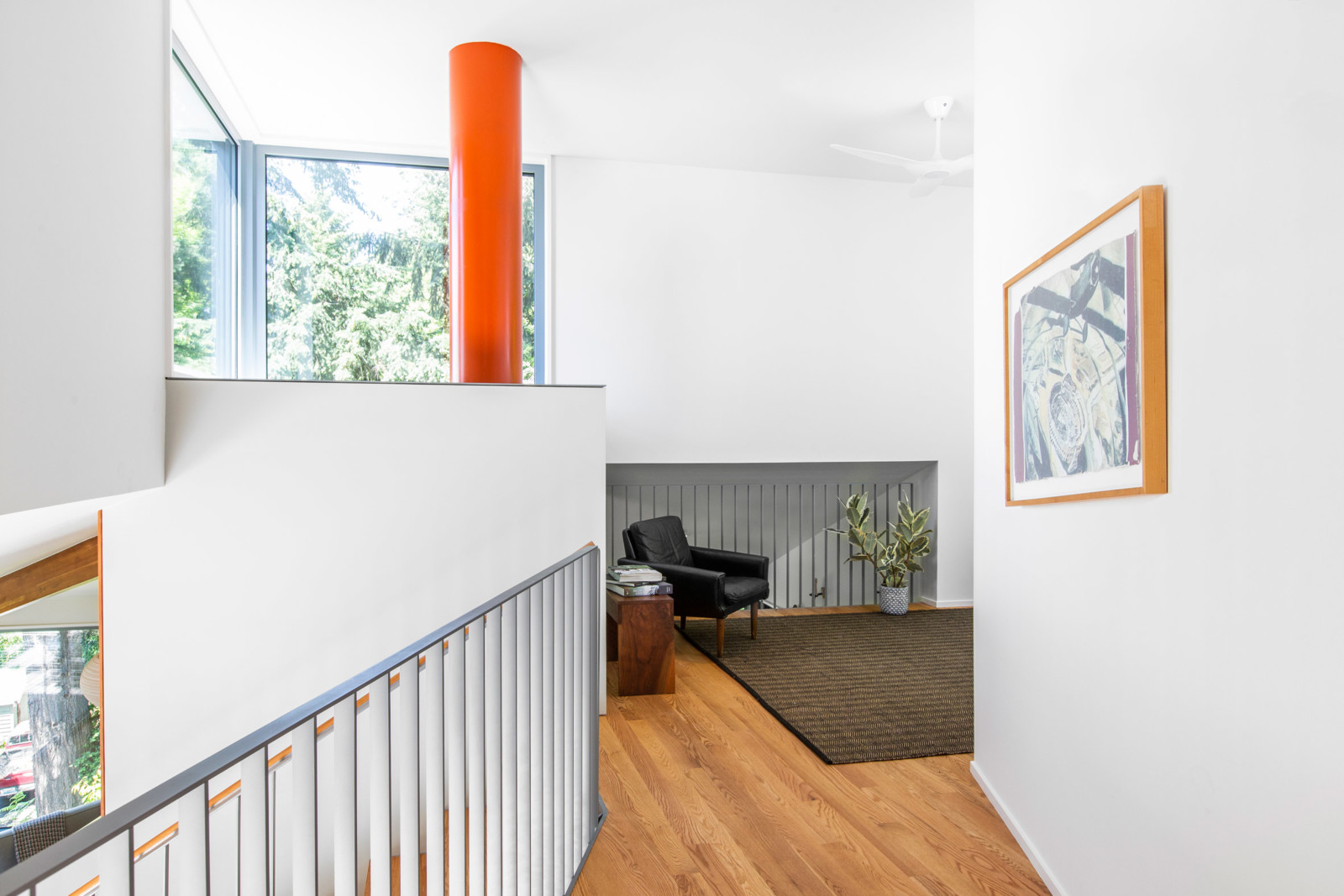
During this process, SHED also “over-insulated” the building’s envelope and introduced Passivhaus-certified windows.
Teamed with an array of rooftop photovoltaic panels, the studio claims this puts the dwelling “on track” to operate as a net-zero energy building – giving the house its name. This means that the energy that it uses annually will be equivalent to the renewable energy that it creates.
Inside, the centrepiece of the Me-Kwa-Mooks Net-Zero is a large hearth on the middle floor, from which a bright orange flue extends up and out.
This flue is modelled on the mast that supports a pitch of a circus big top. While paying tribute to the clients’ history, it also helps to stitch the two volumes together internally.
在此過程中,SHED還“過度隔熱”了建築物的圍護結構,並引入了Passivhaus認證的窗戶。
該工作室與一系列屋頂光伏板配合使用,稱這使住宅“步入正軌”,成為零能耗的能源建築,並因此而得名。 這意味著其每年使用的能源將等於其產生的可再生能源。
在內部,Me-Kwa-Mooks Net-Zero的核心是中層的大爐膛,明亮的橙色煙道從爐膛中向上伸出。
該煙道以支撐馬戲團大頂部的俯仰的桅杆為模型。 在向客戶的歷史致敬的同時,還有助於在內部將這兩本書合在一起。
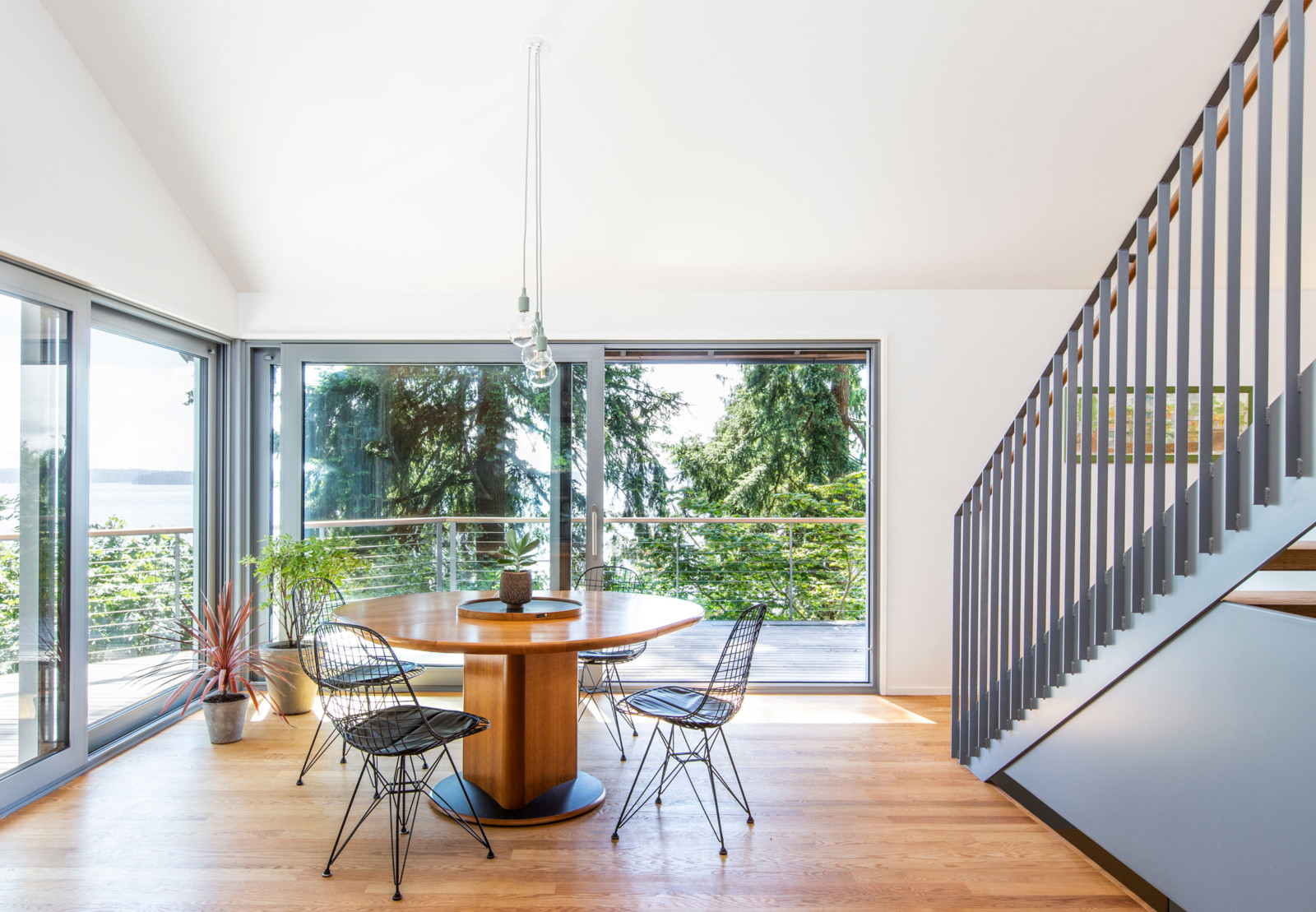
On the middle floor, three different but interconnected rooms are placed around this hearth to emulate a three-ring circus. This includes a dining room, living area and space for performing music.
The bedrooms are placed on the upper floor, alongside an office that is visually connected to the three rooms below to create the feeling of sitting up inside a big top.
在中層,三個不同但相互連接的房間圍繞此壁爐放置,以模仿三環馬戲團。 這包括一個飯廳,起居區和表演音樂的空間。
臥室位於上層,旁邊是一間辦公室,該辦公室在視覺上與下面的三個房間相連,營造了坐在大頂上的感覺。
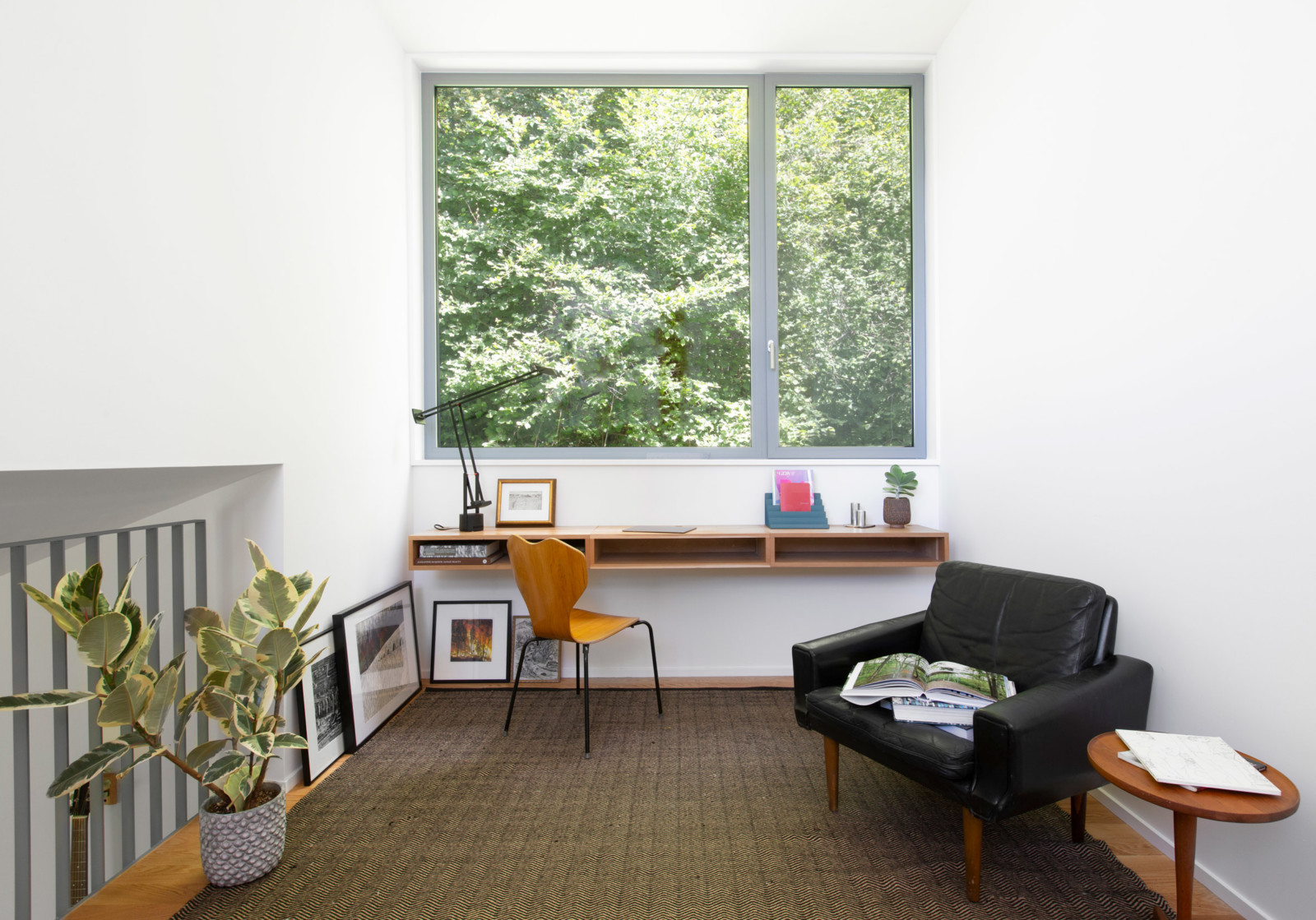
The interiors have deliberately spare finishes, dominated by white-painted plasterboard that emphasises the size and open-plan nature of the rooms.
Highlights include a grey steel stair, an ensuite bedroom with Japanese-style tatami bed and soaking tub, and warm wooden cabinetry and flooring throughout.
室內設計有意地保留餘量,以白色石膏板為主,強調了房間的大小和開放式性質。
亮點包括灰色的鋼製樓梯,帶日式榻榻米床和浸泡浴缸的套間浴室,以及溫暖的木製櫥櫃和地板。
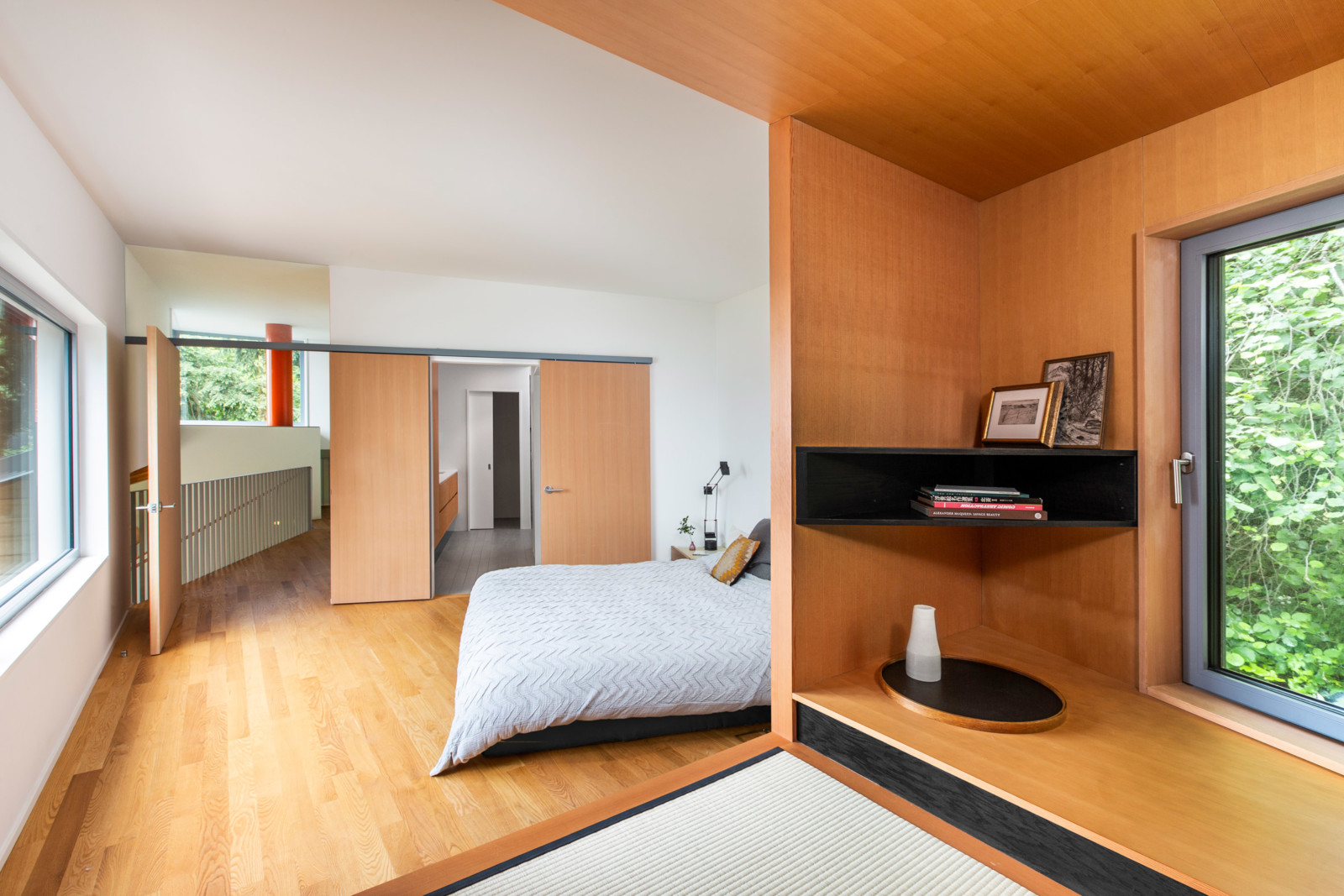
As part of the project, SHED also developed a new entrance sequence for the house as its steep site was originally difficult to access.
This includes a circular stair that leads up from the street to a new trail of steps and a covered bench to allow visitors to stop and rest after the sharp incline.
作為該項目的一部分,SHED還為房屋開發了新的入口順序,因為其陡峭的場地原本難以進入。
其中包括一個圓形的樓梯,從街道一直通向新的台階步道,還有一個帶頂棚的長椅,可讓遊客在急轉彎後停下來休息。
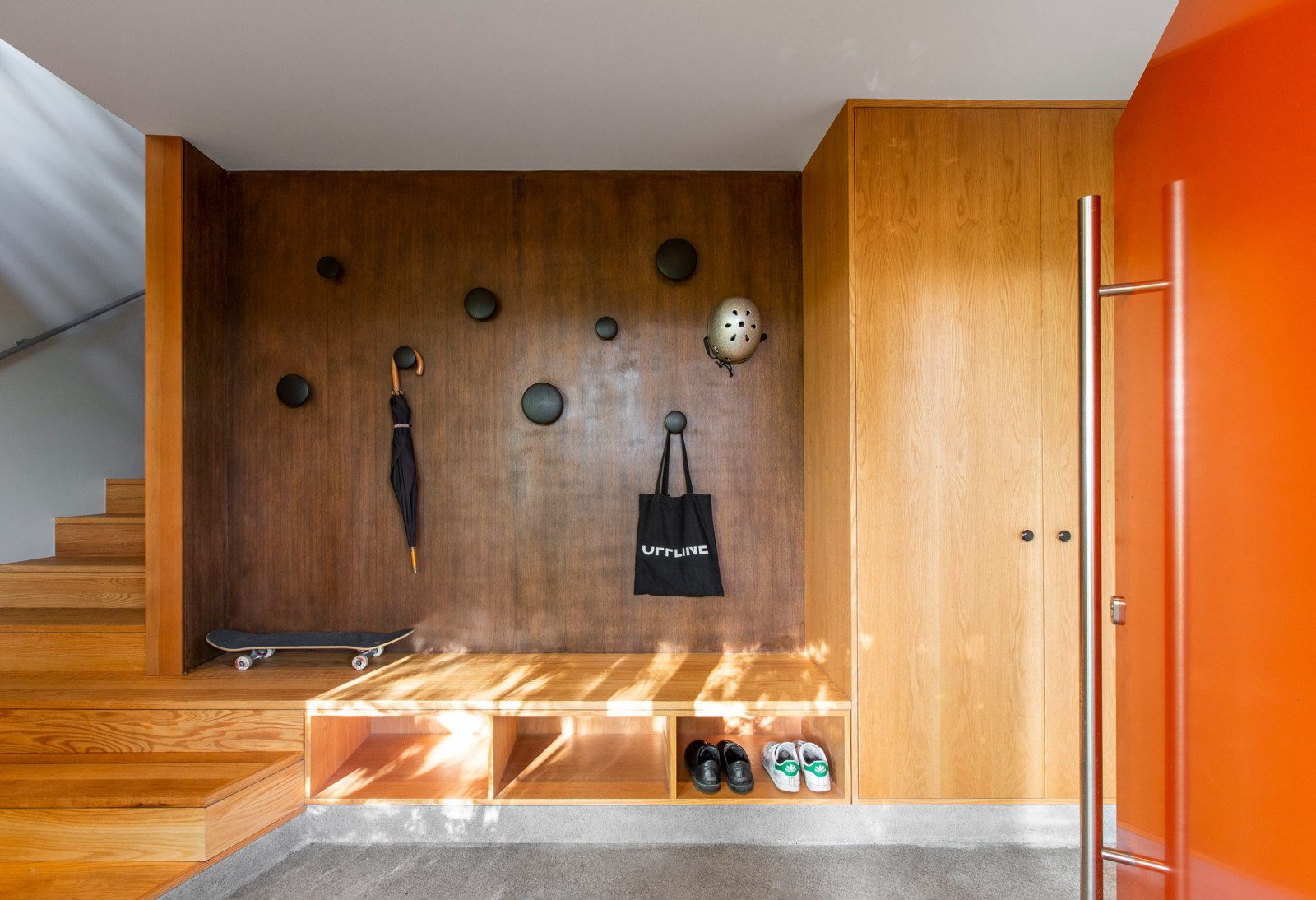
A more accessible driveway with turnaround space has also been incorporated, alongside an open carport that was converted from the old enclosed garage.
Elsewhere, SHED also recently refurbished the early 1950s dwelling in the Pacific Northwest that was built cartoonist Irwin Caplan, and created a pared-back studio space and guesthouse from an old horse stable.
Main image is by Tony Kim. Other photography is by Rafael Soldi unless stated otherwise.
此外,還納入了一條具有周轉空間的更容易接近的車道,以及從舊的封閉式車庫改建而成的開放式車棚。
在其他地方,SHED最近還翻修了1950年代初期在太平洋西北地區建造的漫畫家歐文·卡普蘭(Irwin Caplan)所居住的房屋,並從一個古老的馬stable中創建了一個精簡的工作室和賓館。
主要圖片是Tony Kim。 除非另有說明,否則其他攝影作品均為Rafael Soldi攝影。
FROM:https://www.dezeen.com/2020/10/15/me-kwa-mooks-net-zero-house-shed-seattle-usa/

